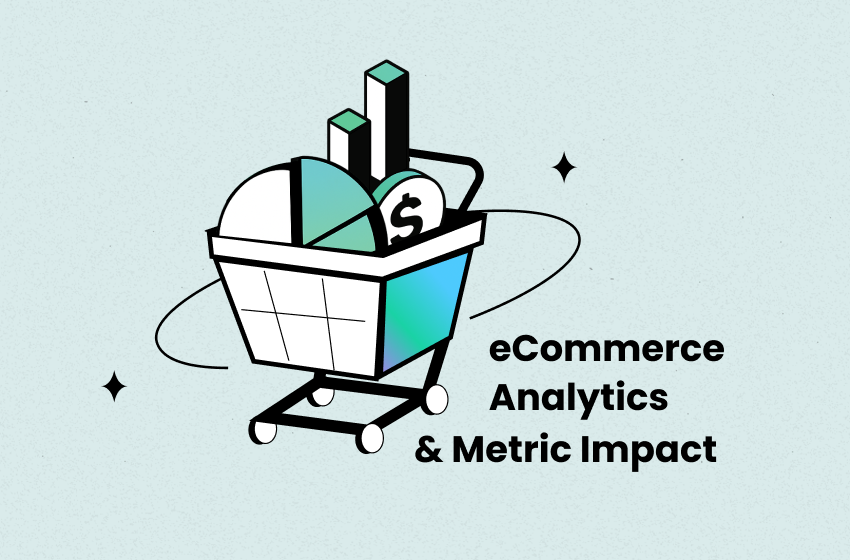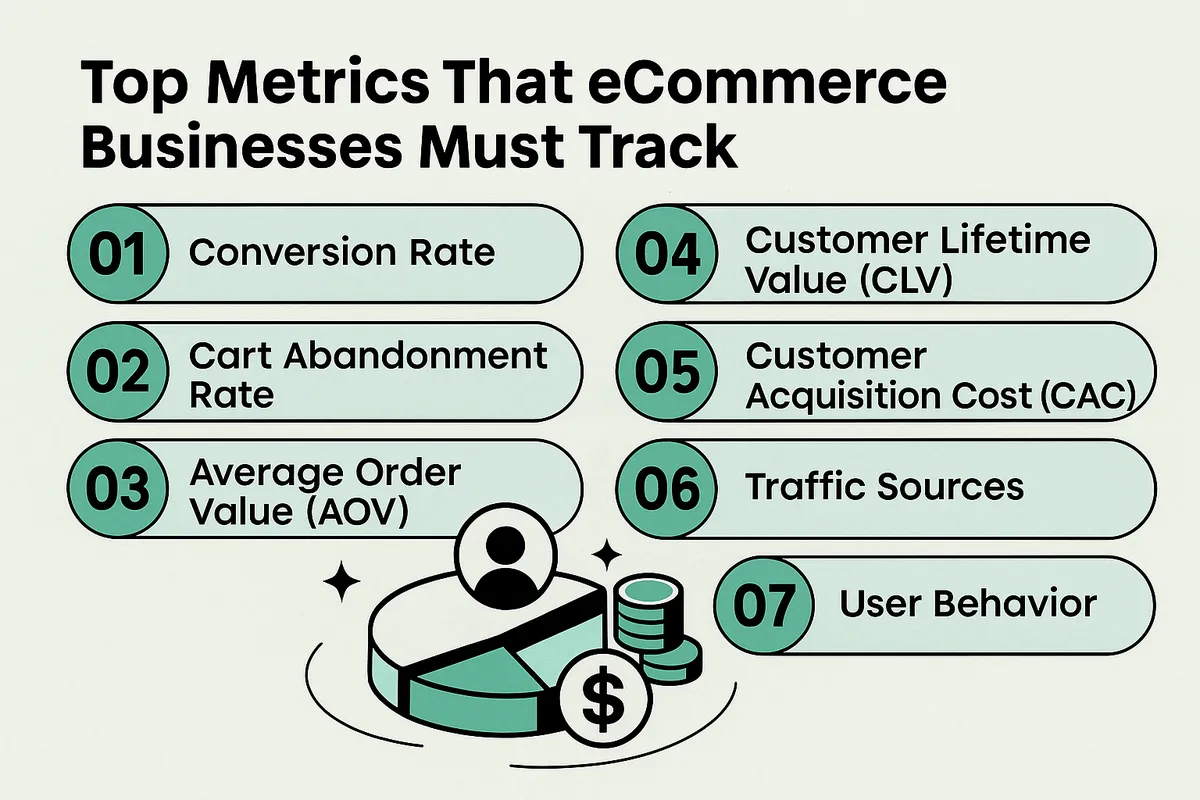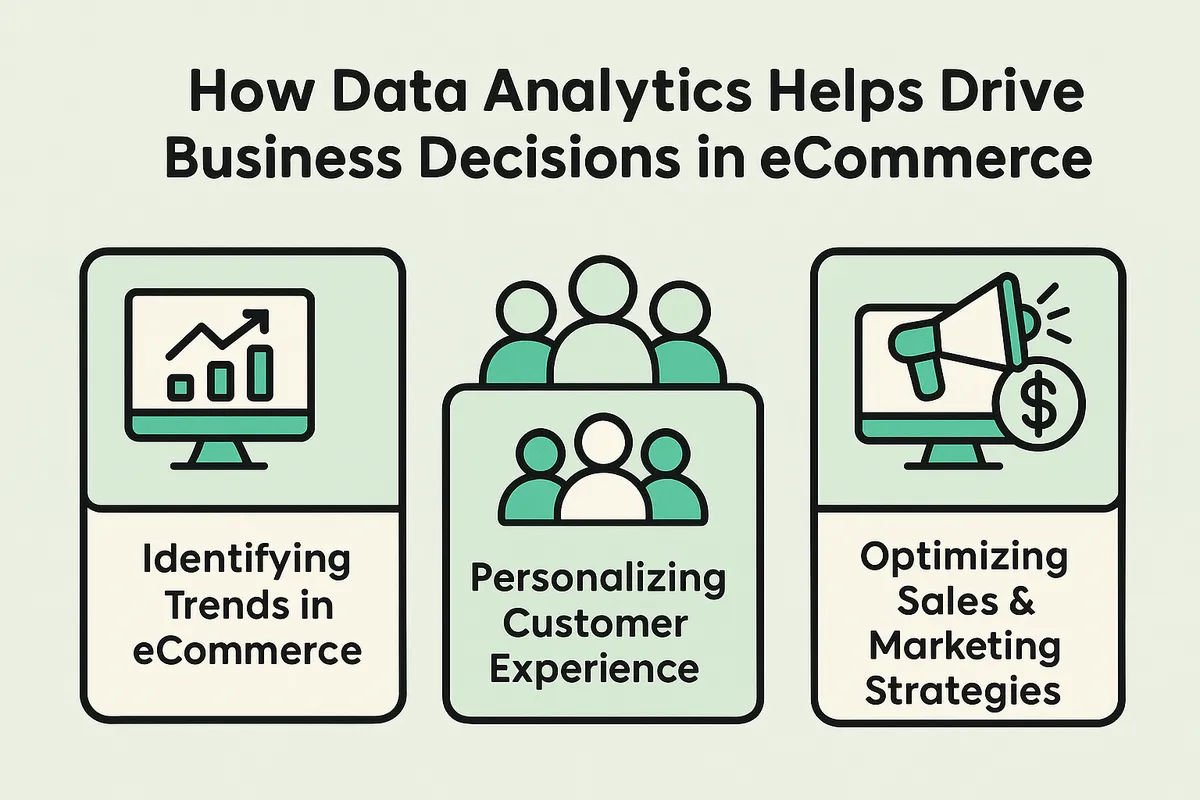How eCommerce Data Analytics & Metrics Impact Your Online Business?

E-Commerce analytics and metrics play a critical role in shaping the success of your online business. Tracking key parameters or datapoints focused on eCommerce success, like customer behavior, conversion rates, traffic sources, customer acquisition costs, and sales performance, enables businesses to gain valuable insights and make informed decisions.
According to Statista, by 2029, in the USA alone, the consumers' appetite for online shopping is predicted to earn USD 1.8 trillion. With the rapidly rising trend of eCommerce, and more businesses switching to online mode, it becomes crucial for eCommerce companies to strategize and perform better than the competitors by leveraging eCommerce software tools to track metrics and analytics more effectively.
Key Takeaways:
- E-Commerce data analytics and metrics play a critical role in analyzing customer behavior and market performance.
- Tracking key metrics like conversion rate, cart abandonment rate, and average order value (AOV), customer lifetime value (CLV), customer acquisition cost (CAC), traffic sources, and user behavior helps businesses make informed, data-driven decisions.
- Regular monitoring and optimization of these metrics lead to better strategies and higher profitability.
- Data analytics reveals trends and patterns related to market and customer behavior that support personalization and customer retention.
- Leveraging analytics empowers businesses to stay competitive, adapt quickly, and boost revenue.
- Integrating analytics drives long-term success for businesses in the ever-evolving world of eCommerce.
Top eCommerce Metrics Businesses Must Track


Metrics offer valuable insights into customer behavior, market performance, and overall business health; however, tracking the right set of metrics is essential for the success of any eCommerce business.
Here are the key metrics that every eCommerce business must track regularly and diligently to ensure perpetual growth and profitability:
1. Net Profit Margin
This is one of the most critical metrics for eCommerce businesses - it shows how much actual profit you’re making after covering all costs. Unlike revenue, net profit margin reflects the real financial health of your store by accounting for expenses like product costs, shipping, marketing, and transaction fees.
A strong net profit margin means your business is not just making sales but keeping more of what it earns. Improving profit margin often involves reducing unnecessary costs, optimizing ad spend, or increasing average order value. However, to do that effectively, you need accurate, real-time cost tracking.
If you're unsure where your margins stand, try our free profit margin calculator or explore how TrueProfit helps automate real-time profit tracking so you can stop guessing and start growing sustainably.
2. Conversion Rate
Conversion rate represents the percentage of eCommerce website visitors completing a desired action, for example, making a purchase or signing up for a newsletter. In summary, it measures and reflects how effectively a site turns traffic into sales.
A high conversion rate in eCommerce indicates a well-optimized user-experience, and a low rate suggests deficiencies like poor product pages, complex checkout processes, or a lack of trust. Businesses can improve their conversion rate through various techniques, including A/B testing, improving product descriptions, allowing quicker check-outs, and simplifying navigation.
3. Cart Abandonment Rate
Cart abandonment rate measures the percentage of users who add products to their shopping cart but do not complete the purchase. High cart abandonment is a common challenge in eCommerce.
It typically results from long checkout processes, unexpected shipping costs, or lack of payment options. Reducing cart abandonment is crucial for business growth and can be achieved through various tactics, including sending reminder emails, offering discounts, or enabling guest checkouts.
4. Average Order Value (AOV)
Average order value or AOV represents the average amount spent by customers in a single transaction. It is calculated by dividing the total revenue by the number of orders.
Increasing AOV can significantly boost revenue in eCommerce businesses without increasing traffic. The best strategies to improve AOV include upselling, cross-selling, offering product bundles, and setting free-shipping thresholds.
5. Customer Lifetime Value (CLV)
Customer lifetime value or CLV estimates the total revenue a business can expect from a single customer over the entire duration of their relationship. This metric is critical for eCommerce businesses to assess long-term profitability and customer loyalty.
A higher CLV suggests that customers are returning and spending more over time. Businesses can improve CLV by offering excellent customer service, loyalty programs, personalized marketing, and consistent value through products and content.
6. Customer Acquisition Cost (CAC)
CAC indicates the average cost of acquiring a new customer, including marketing and advertising expenses. Comparing CAC with CLV helps businesses assess the sustainability of their marketing efforts.
Ideally, CLV should be significantly higher than CAC. Businesses can reduce CAC by leveraging organic marketing channels, increasing conversion rates, and focusing on refining their ad targeting.
7. Traffic Sources
Traffic sources in eCommerce refers to analyzing where your eCommerce website traffic is coming from, for example, from organic search, paid ads, social media, emails, or referrals.
Tracking this metric helps optimize marketing efforts and allows businesses to allocate their budget effectively and focus on high-performing channels. Various tools, like Google Analytics, can help measure traffic, identify trends, and evaluate campaign effectiveness.
8. User Behavior
User behavior metrics involve tracking how users interact with a website, including time spent on site, pages visited, click patterns, and drop-off points. Analyzing user behavior helps businesses identify friction points and areas for improvement in the user journey through tools like heatmaps and session recordings, enabling them to refine the user experience and increase engagement.
For a more detailed list, check out our full guide on 15+ essential eCommerce metrics.
How Ecommerce Data Analytics Helps Drive Business Decisions
Data analytics has become a powerful and inevitable tool for business decision-making in eCommerce. Comprehensive tracking and analysis of customer behavior and market signals enables eCommerce businesses to uncover patterns, allowing them to adapt and grow in competitive environments. Here is how data analytics drives business decisions in eCommerce:
1. Identifying Trends in eCommerce
Identifying trends in eCommerce is the foundation of data-driven decision-making. Leveraging in-depth analysis of eCommerce data and trends helps businesses monitor evolving market trends and shifts in customer demand based on seasonal needs and cultural variations across different locations.
This further includes tracking what product categories are gaining popularity, identifying peak seasons, and understanding how preferences vary across demographics. Retailers can accordingly anticipate buying behavior and adjust inventory levels and pricing strategies to stay ahead of customer needs.
2. Personalizing Customer Experience
Personalizing customer experience is another major advantage of data analytics. Behavior data, including clicks, views, purchases, returns, and more, offer deep insights into customer interests and pain-points.
Leveraging this data enables eCommerce companies to enhance user experience (UX), delivering relevant content, product recommendations, and interfaces tailored to individual preferences. Further, customer segmentation based on behavior, location, or purchase history can further enable creating highly targeted marketing campaigns, resulting in better engagement and loyalty.
3. Optimizing Sales and Marketing Strategies
Optimizing sales and marketing strategies helps maximize ROI in eCommerce. Data analytics helps businesses in identifying which channels and campaigns yield the best results, allowing smarter allocation of advertising budgets.
Conversion funnel analysis, or step-wise analysis of user actions, helps pinpoint where users drop off and what interventions can improve conversion rates, for example, optimizing landing pages, facilitating personalized offers, or simplifying checkout processes.
Wrapping Up
E-Commerce analytics and metrics are vital for making data-backed decisions, optimising customer experiences, and improving sales performance. E-Commerce metrics like conversion rate, AOV, CAC, CLV, cart abandonment rate, and more, provide a roadmap to businesses for better decision-making.
Regularly monitoring and optimization based on these insights enables businesses to enhance performance, reduce costs, and ultimately increase revenue and customer satisfaction. But calculating and tracking them manually? That’s time-consuming and prone to errors.
With TrueProfit, you can instantly access all your essential metrics in one place - no spreadsheets, no stress. Join thousands of Shopify merchants who have unlocked a clearer view of their net profit with our real-time profit tracking solution.
Lila Le is the Marketing Manager at TrueProfit, with a deep understanding of the Shopify ecosystem and a proven track record in dropshipping. She combines hands-on selling experience with marketing expertise to help Shopify merchants scale smarter—through clear positioning, profit-first strategies, and high-converting campaigns.





 Shopify profits
Shopify profits
